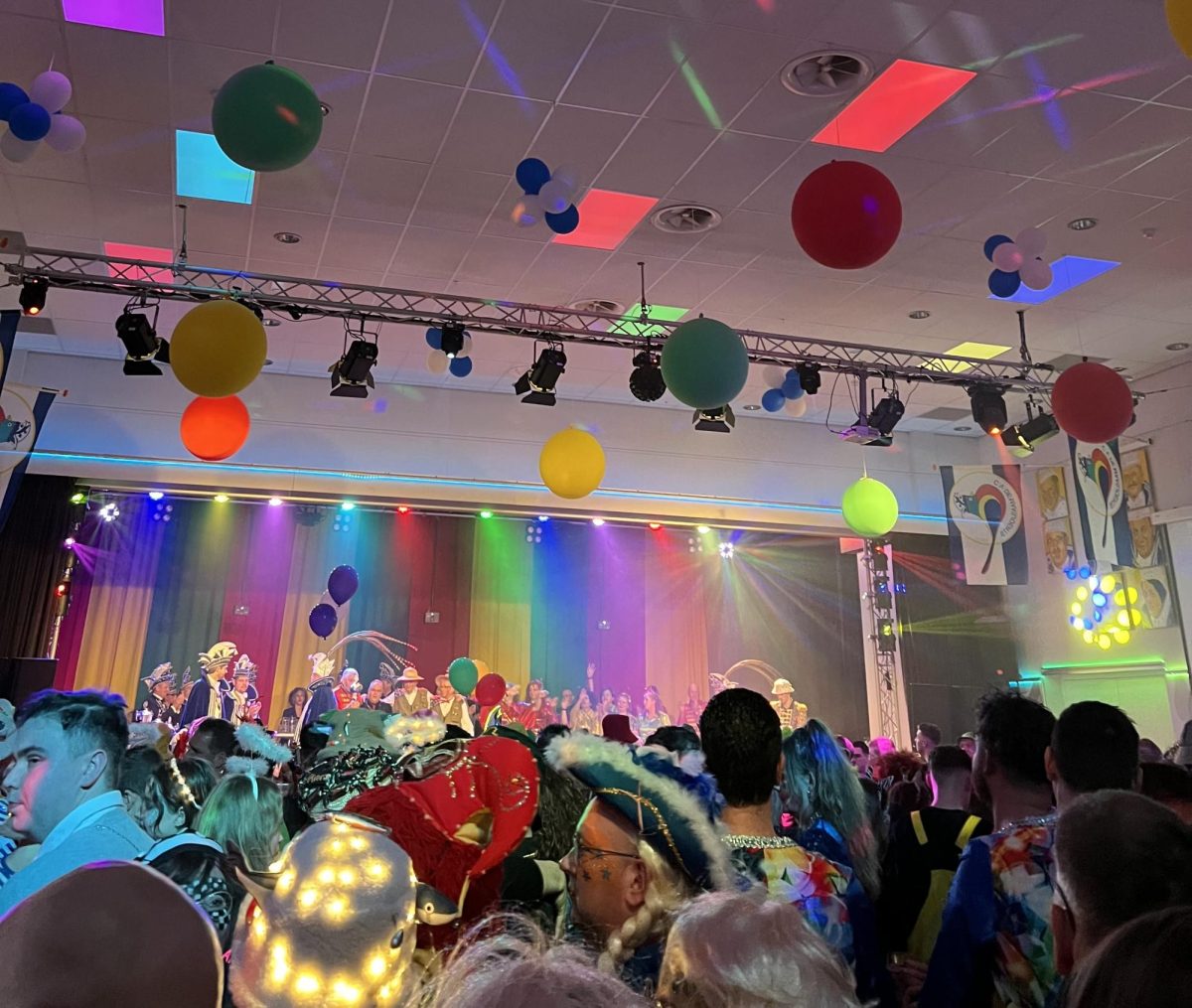While Americans geared up for Super Bowl 58, Emerson students studying abroad at Kasteel Well prepared for a different celebration—participating in the traditional carnival held every February.
Carnival is a Dutch festival held in the Southern region of the Netherlands, including Limburg, where the village of Well is located. It originated as a religious celebration in the Catholic provinces of the Netherlands to mark the beginning of Lent.
The residents of Well, a town with a population of roughly 2,500, were out in full-force throughout the festivities. Carnival is described as a “giant role reversal,” in which societal norms are flipped in favor of dressing up and drinking, among other customs. Town mayors hand the keys of their cities to Prince Carnival, who controls the city for 72 celebratory hours.
Sunday, Feb. 11, marked the official start of Carnival. Massive floats and dozens of people overtook the road, Kasteellaan, surrounding the castle as techno music blasted from the speakers. Residents were decked out in colorful costumes that ranged from Mario and Luigi to clown outfits and cops. Kasteel Well students joined the fun by passing out hotdogs to parade participants.
Students commonly shared that Carnival exceeded their expectations, as they didn’t initially realize how intense the festivities were.
“I was kind of expecting it to be similar to Mardi Gras,” sophomore communications student Lorina Sediqi said. “I knew there were going to be floats, and it was going to be a parade … I didn’t know how big of a deal it was.”
“It was crazy,” sophomore creative writing student Olivia Cowie said. “But it was probably the most fun I had on campus. It felt like we were giving back to the community, and they were getting to know us.”
Sediqi pointed out how the Netherlands’ festivities were unique compared to traditional American celebrations.
“There was just a whole other level to it that you can never experience anywhere else—all of the costumes and the vibe there,” she said. “And the hotdogs were so funny, but it seemed so normal.”
Junior creative writing student Gabriel Borges was equally impressed by the immersive experience.
“People interacted, they asked us to dance with them, do tricks with them,” he said. “I even got to go inside one of the trucks, and they offered us drinks. It was cool how people wanted us to be involved with them.”
Borges specifically noted the similarities and differences between the carnival here and the festivities in his native Brazil.
“It’s kind of the same thing, people go around the streets,” he said. “What makes it different is, this was in a small town [and] usually, in Brazil, people go to bigger cities to do the carnival. I thought it was interesting how they were in a small-ish town but still doing it.”
Sediqi added that the immersive experience added to the carnival’s uniqueness.
“Sometimes, with an American parade, people just sit and watch, and not everyone interacts,” she said. “But the fact that everyone was interacting with each other and everyone had something to do was very unique.”
Throughout Sunday afternoon, students connected with Well’s residents and fed them with fresh hotdogs, complete with condiments and American flag napkins. The community of Well had something for students in return: small tokens of appreciation that included candy, fake money, and, occasionally, drinks.
“The best part was being immersed in it as the parade was passing by,” Sediqi said. “Getting to interact with everyone. Everyone was just having a really good time. The most challenging part was getting the hotdogs ready. There were so many people coming in and out, [and] we kind of had a system going. But by the end, we were out of hotdogs.”
The carnival went beyond hotdogs and parades. The local bar, De Buun, held nightly activities from Sunday through Tuesday, with students and residents partying into the middle of the night as electronic music—including covers of American songs—blasted from the speakers. Carnival concluded Tuesday at midnight with a resounding fireworks display heard throughout the castle and the village.

Sediqi, Borges, and Cowie had many positive takeaways from the few days of festivities, notably appreciating community and interacting with adults closer to their age.
“It’s an aspect of the culture that I never knew [about],” Sediqi said. “It made me really glad that I came for the spring semester, specifically.”
She also advised future spring castle dwellers to prepare for the carnival’s intensity.
“For the celebrations at night, too, if you’re not in a costume, you stand out so much,” Sediqi said. “They also had Sophie’s Closet, so when that opens, I suggest getting the costumes because I had no idea about that beforehand.”
“There’s so many people in the community that are open to teaching us about what they do here,” Cowie said. “And just knowing that those people are out there, and they’re willing to talk to us.”